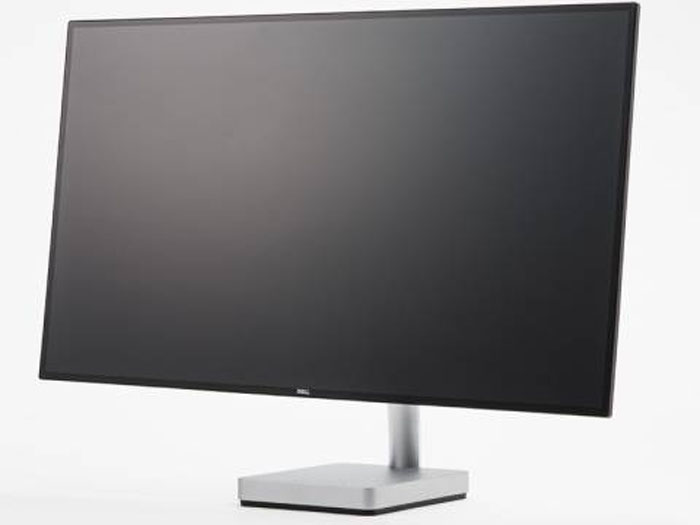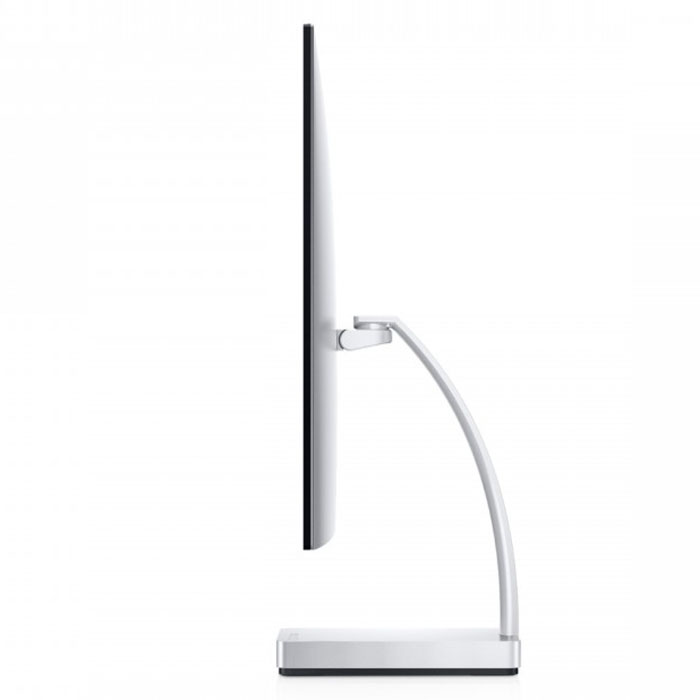Early Verdict
HDR is a work in progress but Dell has wisely chosen to support HDR10 in the S2718D. This IPS panel offers QHD resolution, UHD signal compatibility, and excellent accuracy in its HDR modes. While contrast is a bit low to truly appreciate the technology, it does offer an image quality upgrade over other SDR-only monitors. We’d love to see the addition of a VA panel and gaming features like adaptive-sync and fast refresh. For now though, it’s about the only game in town if you’re shopping for HDR. Early-adopters will want to check it out.
Pros
- +
HDR10
- +
Good color after calibration
- +
QHD resolution
- +
HDMI 2.0
- +
USB-C
- +
Accepts UHD signals
- +
Styling
- +
Thin panel
Cons
- -
Contrast
- -
Out-of-box accuracy
- -
No adaptive-refresh
- -
60Hz
Why you can trust Tom's Hardware
Features & Specifications
IPS panels with QHD resolution have become the premium displays in nearly every category. Today we’re looking at a style-conscious model from Dell. On the surface, the the S2718D is no different than many other good looking business monitors. It sports a thin bezel, an all-metal stand, and clean cable management, along with one of the thinnest panels we’ve ever seen. If that were the extent of its virtues, it would be a good monitor. But Dell has added something to set it apart from other displays – HDR10 support. This is the first product we’ve seen that incorporates the standard and we’re curious to see how a typical 1000:1-contrast monitor will handle the new High Dynamic Range content found on Ultra HD Blu-ray.
If you look past the S2718D’s HDR-support and high-end styling, it is similar to many displays in this class. The panel is an IPS part with QHD resolution, 8-bit color depth, sRGB color, 60Hz refresh rate, and a flicker-free LED backlight. That makes it ideally suited to the premium enterprise desktop as well as home office dwellers looking for something nicer than the norm.
To this it adds a super thin 7mm bezel and a slick, integrated stand that moves the control buttons and inputs off the panel and down to the desk surface. Cable management will be a breeze, especially considering there are only HDMI and USB-C inputs. The big attraction though, is HDR10 support.
Current displays can integrate either Dolby Vision or HDR10 (or both) for a wider dynamic range and compatibility with the latest Ultra HD content from both Blu-ray and streaming services. The latter is much easier to find and therefore the most logical choice for this monitor. Dolby Vision is still a work in progress, though Sony has announced its first title using the format, Resident Evil: Vendetta, shipping in July.
HDR10 is found on every other Ultra HD Blu-ray disc currently available and will likely be the dominant format for the near future. If Dell wanted to add Dolby Vision to the S2718D, it might be possible with a firmware update.
To see HDR content, you’ll need a compatible player or computer with an HDMI 2.0/HDCP 2.2 output. The latest Ultra HD Blu-ray players feature this interface. You can also connect with the right video card. Fortunately, there are quite a few choices. On the Nvidia side is the GTX 950 up to the Titan X (Maxwell), or the GTX 1050 to Titan X (Pascal). AMD users can employ an R9 390X or RX 460, 470, or 480. And for Blu-ray users, the S2718D will accept a 3840x2160 signal at up to 60Hz over its HDMI input.
We’ll run our standard benchmarks in SDR mode as well as a new suite of tests for HDR content. We’ve added new tools to our kit, and we’ll explain how the S2718D handles the new format. And we’ll tell you how to enjoy this new content on your own system. Let’s take a look.
Get Tom's Hardware's best news and in-depth reviews, straight to your inbox.
Packaging, Physical Layout & Accessories
Dell certainly takes a creative approach to its packaging. The S2718D arrives in a box like a television’s, where you remove four plastic plugs and lift off the top to reveal the contents. Foam is used sparingly, so to protect the monitor Dell uses corrugated cardboard in various shapes. It worked effectively in our case; the sample arrived without a scratch. The panel lifts out fully assembled with its stand.
An external power supply keeps the panel as thin as possible. Additional cables include HDMI and USB-C. Supporting documentation can be downloaded from Dell’s website.
Product 360





The S2718D’s styling is the first thing everyone will notice. It’s one of the most minimalist designs we’ve seen. Most of the internal components are in the all-metal base that houses control buttons and the inputs. It’s connected to the panel with a metal upright and a small hinge that allows 45° swivel to each side, 21° back tilt, and 4° forward. There is no height adjustment, but we found the fixed position to be ideal on our desktop. The hinge does a good job of holding the panel in place, but its small size means there is some wobble after you make a change.
The panel measures just 20mm at its thickest. The back is plastic, but color and texture match the base and upright’s satin aluminum finish perfectly. It’s smoothly tapered and completely unmarred by vents or holes. During operation, the bottom edge is warm to the touch but only slightly. Heat management is exemplary. The screen’s front layer is shiny and should be placed carefully to avoid image-damaging reflections. The 7mm flush-mounted bezel is situated behind that layer for a smooth, integrated look.
The base features control buttons across its front edge. They click with a high-end feel and provide easy and quick access to commonly-used functions and the excellent OSD. In back are HDMI 2.0/HDCP 2.2 and USB-C inputs along with two USB 3.1 downstream ports and an analog audio output. There are no built-in speakers.
MORE: Best Gaming Monitors
MORE: Best Professional Monitors
MORE: How We Test Monitors
MORE: How To Choose A Monitor
MORE: All Monitor Content

Christian Eberle is a Contributing Editor for Tom's Hardware US. He's a veteran reviewer of A/V equipment, specializing in monitors. Christian began his obsession with tech when he built his first PC in 1991, a 286 running DOS 3.0 at a blazing 12MHz. In 2006, he undertook training from the Imaging Science Foundation in video calibration and testing and thus started a passion for precise imaging that persists to this day. He is also a professional musician with a degree from the New England Conservatory as a classical bassoonist which he used to good effect as a performer with the West Point Army Band from 1987 to 2013. He enjoys watching movies and listening to high-end audio in his custom-built home theater and can be seen riding trails near his home on a race-ready ICE VTX recumbent trike. Christian enjoys the endless summer in Florida where he lives with his wife and Chihuahua and plays with orchestras around the state.
